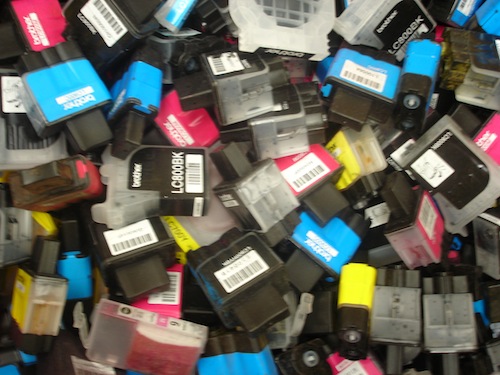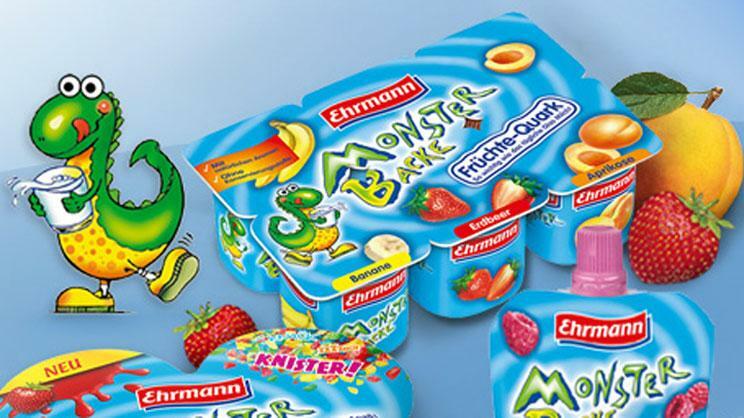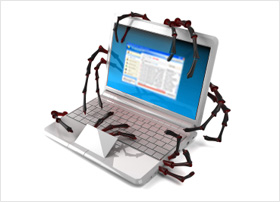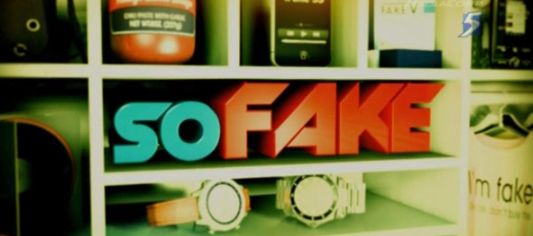General description
 |
| Growth in seizures of counterfeit goods by U.S. |
According to the
Organisation for Economic Co-operation and Development (OECD),
counterfeit products encompass all products made to closely imitate the
appearance of the product of another as to mislead consumers. Those can
include the unauthorised production and distribution of products that
are protected by intellectual property rights, such as copyright, trade
marks and trade names. In many cases, different types of those
infringements can often overlap: Music piracy mostly infringes copyright
as well as trade marks; fake toys infringe design protection. The term
"counterfeiting" therefore addresses piracy and related issues, such as
copying of packaging, labelling, or any other significant features of
the goods.
Among the leading industries that have been seriously affected by
counterfeiting are software, music recordings, motion pictures, luxury
goods and fashion clothes, sportswear, perfumes, toys, aircraft
components, spare parts and car accessories, and pharmaceuticals.
Apparel and accessories
 |
A counterfeit Patek Philippe watch.
The hand on the left sub-dial has fallen off. |
Counterfeit clothes, shoes and handbags from designer brands are made
in varying quality; sometimes the intent is only to fool the gullible
buyer who only looks at the label and doesn't know what the real thing
looks like, while others put some serious effort into mimicking fashion
details. Others realize that most consumers do not care if the goods
they buy are counterfeit and just wish to purchase inexpensive products.
The popularity of designer jeans
in 1978, spurred a flood of knockoffs. Factories that manufacture
counterfeit designer brand garments and watches are usually located in
developing countries. International tourists visiting Beijing, China, will find a wide selection of counterfeit designer brand garments at the infamous Silk Street. Expensive watches are vulnerable to counterfeiting; it is a common cliché that any visitor to New York City will be approached on a street corner by a vendor with a dozen such
counterfeit watches
inside his coat, offered at bargain prices. In Malaysia, Thailand,
Vietnam and the Philippines, extremely authentic looking, ranging from
very poor quality watch fakes with self-winding mechanisms and fully
working movements can sell for as little as US $20 to good quality ones
that sell for 1 $100 and over. Also some fakes' movements and materials
are of remarkably passable quality — albeit inconsistently so — and may
look good and work well for some years, a possible consequence of
increasing competition within the counterfeiting community. Thailand has
opened a Museum of Counterfeit Goods displaying over 3,500 different
items, in 14 different categories, which violate trade marks, patents,
or copyrights.
Wine
In China, counterfeit high-end wines are a growing beverage industry segment, where fakes are sold to Chinese consumers. Knock-off artists refill empty bottles from famous chateaux with
inferior vintages. According to one source, "Upwardly mobile Chinese,
eager to display their wealth and sophistication, have since developed a
taste for imported wine along with other foreign luxuries." In China,
wine consumption more than doubled since 2005, making China the
seventh-largest market in the world. The methods used to dupe innocent consumers includes photocopying
labels, creating different and phony chateaux names on the capsule and
the label. Sometimes authentic bottles are used but another wine is
added by using a syringe. The problem is so widespread in China, the
U.S. and Europe, that auction house Christie's
has begun smashing empty bottles with a hammer to prevent them from
entering the black market. During one sale in 2008, a French vintner was
"shocked to discover that '106 bottles out of 107' were fakes."
According to one source, counterfeit French wines sold locally and
abroad "could take on a much more serious amplitude in Asia because the
market is developing at a dazzling speed." Vintners are either unable or
hesitant to fight such counterfeiters: "There are no funds. Each
lawsuit costs 500,000 euros," states one French vintner. In addition,
some vintners, like product and food manufacturers, prefer to avoid any
publicity regarding fakes to avoid injuring their brand names.
Counterfeit wine is also found in the West; it is primarily a problem for collectors of rare wine, especially of pre-WWII French wines, as producers kept spotty records at the time. Famous examples of counterfeiting include the case of Hardy Rodenstock, who was involved with the so-called "Jefferson bottles," and Rudy Kurniawan, who was indicted in March 2012 for attempting to sell faked bottles of La Tâche from Domaine de la Romanée-Conti and Clos St. Denis from Domaine Ponsot. In both cases, the victims of the fraud were high-end wine collectors, including Bill Koch, who sued both Rodenstock and Kurniawan over fake wines sold both at auction and privately.
Distribution
Compact Discs, videotapes and DVDs, computer software and other media that are easily copied can be counterfeited and sold through vendors at street markets, night markets, mail order, and numerous Internet sources, including open auction sites like
eBay.
In some cases where the counterfeit media has packaging good enough to
be mistaken for the genuine product, it is sometimes sold as such. Music
enthusiasts may use the term "bootleg recording"
to differentiate otherwise unavailable recordings from counterfeited
copies of commercially released material. In August 2011, it was
reported that at least 22 fake Apple computer stores were operating in parts of China, despite others having been shut down in the past by authorities at other locations. The following month, also in China, it was discovered that the popular mobile game Angry Birds, had been re-created into a theme park without permission from its Finnish copyright or trade mark owners.
Drugs
 |
| Bulk bag of counterfeit Viagra |
According to the U.S.
FBI,
the counterfeiting of pharmaceuticals accounts for an estimated $600
billion in global trade, and may be the "crime of the 21st century."
They add that it "poses significant adverse health and economic
consequences for individuals and corporations alike." The
World Health Organization (WHO) estimates that over 30% of pharmaceuticals in developing
countries are fake, stating that "Anyone, anywhere in the world, can
come across medicines seemingly packaged in the right way but which do
not contain the correct ingredients and, in the worst-case scenario, may
be filled with highly toxic substances.” The U.S.
Food and Drug Administration (FDA) describes counterfeit drugs as those sold under a product name without proper authorization:
"Counterfeiting can apply to both brand name and generic products, where the identity of the source is mislabeled in a way that suggests that it is the authentic approved product. Counterfeit products may include products without the active ingredient, with an insufficient or excessive quantity of the active ingredient, with the wrong active ingredient, or with fake packaging."
Experts estimate that counterfeit medications kill at least 100,000 people a year, mostly in undeveloped countries. According to the The Economist, between 15%-30% of antibiotic drugs in Africa and South-East Asia are fake. The UN estimates that roughly half of the antimalarial drugs sold in Africa—worth some $438m a year—are counterfeits. Pfizer Pharmaceuticals has found fake versions of at least 20 of its products, such as Viagra and Lipitor,
in the legitimate supply chains of at least 44 countries. Pfizer also
found that nearly 20% of Europeans had obtained medicines through
illicit channels, amounting to $12.8 billion in sales. Other experts
estimate the global market for fake medications could be worth between
$75 billion and $200 billion a year, as of 2010. Other counterfeit prescription drugs that have been found in the "legitimate" supply chain are Plavix, used to treat blood clots, Zyprexa for schizophrenia, Casodex, used to treat prostate cancer, Tamiflu, used to treat influenza, including Swine flu, and Aricept, used to treat Alzheimers. The EU reported that as of 2005 India
was by far the biggest supplier of fake drugs," accounting for 75 percent of the global cases of counterfeit medicine. Another 7% came from Egypt and 6% from China.
Those involved in their production and distribution include medical
professionals such as pharmacists and physicians, organized crime
syndicates, rogue pharmaceutical companies, corrupt local and national
officials and terrorist organizations. The Philippine Department of Health has found that 10% of drugs sold in their country were counterfeit. In 2005, counterfeit pharmaceuticals affected less than one percent in
developed countries, such as the U.S. , Australia, and countries within
the EU, with the problem growing due to increased global sourcing and
manufacturing. A study by the OECD
concluded that "a worrisome trend is that counterfeits are increasingly
being detected as having entered the supply chain of some of the most
regulated jurisdictions," noting an example of one source reporting a
27% increase in number of incident over one year." According to the World Health Organization (WHO), by 2006 developing countries had a counterfeit prevalence of 10-30 per cent or higher.
Food
Food fraud, "the intentional adulteration of food with cheaper
ingredients for economic gain," is a well-documented crime that has
existed in the U.S. and Europe for many decades. It has only received
most attention in recent years as the fear of bioterrorism has increased. Numerous cases of intentional food fraud have been discovered over the last few years:
U.S.
- In 2008, U.S. consumers were "panicked" and a "media firestorm"
ensued when Chinese milk was discovered to have been adulterated with
the chemical melamine, to make milk appear to have a higher protein content. It caused 900 infants to be hospitalized with six deaths.
- In 2007, the University of North Carolina found that 77 percent of fish labeled as red snapper was actually tilapia, a common and less flavorful species. The Chicago Sun-Times
tested fish at 17 sushi restaurants found that fish being sold as red
snapper actually was mostly tilapia. Other inspections uncovered catfish being sold as grouper, which normally sells for nearly twice as much as catfish. Fish is the most frequently faked food Americans buy, which includes
"...selling a cheaper fish, such as pen-raised Atlantic salmon, as wild
Alaska salmon." In one test, Consumer Reports found that less than half of supposedly "wild-caught" salmon sold in 2005-2006 were actually wild, and the rest were farmed.
- French cognac was discovered to have been adulterated with brandy, and their honey was mixed with cheaper sugars, such as high-fructose corn syrup.
- In 2008, U.S. food safety officers seized more than 10,000 cases of counterfeit extra virgin olive oil, worth more than $700,000, from warehouses in New York and New Jersey. Olive oil is considered one of the most frequently counterfeited food
products, according to the FDA, with one study finding that a lot of
products labeled as "extra-virgin olive oil" actually contained up to
90% soybean oil.
However, in the U.S., where the Food and Drug Administration
(FDA) is the primary regulatory body for food safety and enforcement,
they admit that the "sheer magnitude of the potential crime" makes
prevention difficult, along with the fact that food safety is not
treated as a high priority. They note that with more than 300 ports of
entry through which 13 percent of America's food supply passes, the FDA
is only able to inspect about 2 percent of that food. "
- Europe
Food counterfeiting and piracy is a serious threat in Europe. In
2005, EU customs seized more than 75 million counterfeited and pirated
goods, including foods, medicines and other goods, party due to internet
sales. More than 5 million counterfeit food-related items, including
drinks and alcohol products were seized. According to the EU's taxation
and customs commissioner, "A secret wave of dangerous fakes is
threatening the people in Europe."
Cigarettes
British undercover detectives have found that counterfeited cigarettes contain frequently human excrement, asbestos, mold and dead flies.
Corporations
There has been at least one instance of an entire fake parallel manufacturing / distributing / retail system. NEC, a large Japanese electronics company, was apparently copied and sold throughout South East Asia. A persistent customer, dissatisfied by the fake NEC's warranty service,
complained to the real NEC headquarters in Japan, who thereupon found
that they were manufacturing and distributing products they had never
heard of.
Military items
According to a U.S. Senate committee report in 2012 and reported by
ABC News, "counterfeit electronic parts from China are 'flooding' into
critical U.S. military systems, including special operations helicopters
and surveillance planes, and are putting the nation's troops at risk."
The report notes that Chinese companies take discarded electronic parts
from other nations, removes any identifying marks, washes and
refurbishes them, and then resells them as brand-new – "a practice that
poses a significant risk to the performance of U.S. military systems.

















































.jpeg)

